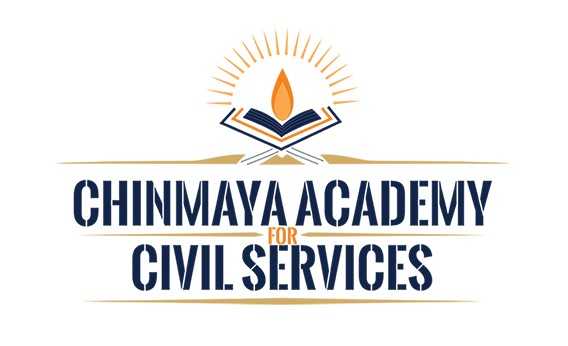The Manipuri language is a part of the Tibeto-Burman family and is widely used in the state of Manipur in North East India, as well as in adjacent areas of Myanmar and Bangladesh. The Indian Constitution recognizes Manipuri as an official language of the Union, and it is listed in the eighth schedule of the Constitution. The IAS Mains exam offers candidates the option of choosing Manipuri Literature as one of their optional subjects.
In this article, we outline the syllabus for the Manipuri Literature option for the civil services examination. The syllabus covers topics such as the history and development of the Manipuri language, its linguistic characteristics, and notable works from various periods, including ancient, medieval, and modern literature.
It is ideal for those proficient in Manipuri, whether through academic study or as a mother tongue, to choose this option for the UPSC Mains exam. The Manipuri Literature option consists of two papers, each worth 250 marks, for a total of 500 marks.
MANIPURI
PAPER-I
(Answers must be written in Manipuri)
Section A
Language :
(a) General characteristics of Manipuri Language and history of its development; its importance and status among the Tibeto-Burman Languages of North-East India; recent development in the study of Manipuri Language; evolution and study of old Manipuri script.
(b) Significant features of Manipuri Language :
(i) Phonology : Phoneme-vowels, consonants juncture, tone, consonant cluster and its occurrence, syllableits structure, pattern and types.
(ii) Morphology : Word-class, root and its types; affix and its types; grammatical categories-gender, number, person, case, tense and aspects, process of compounding (samas and sandhi).
(iii) Syntax : Word order; types of sentences, phrase and clause structures.
Section B
(a) Literary History of Manipuri :
Early period (up to 17th Century)–Social and cultural background; Themes, diction and style of the works.
Medieval period (18th and 19th Century)-Social, religious and political background; Themes, diction and style of the works.
Modern period-Growth of major literary forms; change of Themes, diction and style.
(b) Manipuri Folk Literature :
Legend, Folktale, Folksong, Ballad, Proverb and Riddle.
(c) Aspects of Manipuri Culture :
Pre-Hindu Manipuri Faith; Advent of Hinduism and the process of syncreticism;
Performing arts-Lai Haraoba, Maha Ras;
Indegenous games-Sagol Kangjei, Khong Kangjei, Kang.
PAPER-II
(Answers must be written in Manipuri)
This paper will require first hand reading of the texts prescribed and will be designed to test candidate’s critical ability to assess them.
Section A
Old and Medieval Manipuri Literature :
(a) Old Manipuri Literature :
1. O. Bhogeswar Singh (Ed.) : Numit Kappa
2. M. Gourachandra Singh (Ed.) : Thawanthaba Hiran
3. N. Khelchandra Singh (Ed.) : Naothingkhong Phambal Kaba
4. M. Chandra Singh (Ed.) : Panthoibi Khonggul
(b) Medieval Manipuri Literature :
1. M. Chandra Singh (Ed.) : Samsok Ngamba
2. R.K. Snahal Singh (Ed.) : Ramayana Adi Kanda
3. N. Khelchandra Singh (Ed.) : Dhananjoy Laibu Ningba
4. O. Bhogeswar Singh (Ed.) : Chandrakirti Jila Changba
Section B
Modern Manipuri Literature :
(a) Poetry and Epic :
(I) Poetry :
(a) Manipuri Sheireng (Pub) Manipuri Sahitya Parishad, 1998(Ed.)
Kh. Chaoba Singh : Pi Thadoi, Lamgi CheklaAmada, Loktak
Dr. L. Kamal Singh : Nirjanata, Nirab Rajani
A. Minaketan Singh : Kamalda, Nonggumlalkkhoda.
L. Samarendra Singh : Ingagi Nong, Mamang Leikai Thambal Satle
E. Nilakanta Singh : Manipur, Lamangnaba
Shri Biren : Tangkhul Hui
Th. Ibopishak : Anouba Thunglaba Jiba.
(b) Kanchi Sheireng. (Pub) Manipur University 1998 (Ed.)
Dr. L. Kamal Singh : Biswa-Prem
Shri Biren : Chaphadraba Laigi Yen
Th. Ibopishak : Norok Patal Prithivi
(II) Epic :
1. A. Dorendrajit Singh : Kansa Bodha
2. H. Anganghal Singh : Khamba-Thoibi Sheireng(San-Senba, Lei Langba,Shamu Khonggi Bichar)
(III) Drama :
1. S. Lalit Singh : Areppa Marup
2. G.C. Tongbra : Matric Pass
3. A. Samarendra : Judge Saheb ki Imung
(b) Novel, Short-story and Prose :
(I) Novel :
1. Dr. L. Kamal Singh : Madhabi
2. H. Anganghal Singh : Jahera
3. H. Guno Singh : Laman
4. Pacha Meetei : Imphal Amasung, Magi Ishing, Nungsitki Phibam
(II) Short-story :
(a) Kanchi Warimacha (Pub) Manipur University 1997(Ed.)
R.K. Shitaljit Singh : Kamala Kamala
M.K. Binodini : Eigi Thahoudraba Heitup Lalu
Kh. Prakash : Wanom Shareng
(b) Parishadki Khangatlaba Warimacha (Pub) Manipuri Sahitya Parishad 1994 (Ed.)
S. Nilbir Shastri : Loukhatpa
R.K. Elangba : Karinunggi
(c) Anouba Manipuri Warimacha (Pub) The Cultural Forum Manipur 1992 (Ed.)
N. Kunjamohon Singh : Ijat Tanba
E. Dinamani : Nongthak Khongnang
(III) Prose :
(a) Warenggi Saklon [Due Part] (Pub) The Cultural Forum Manipur 1992 (Ed.)
Kh. Chaoba Singh : Khamba-Thoibigi Wari Amasung Mahakavya
(b) Kanchi Wareng (Pub) Manipur University, 1998 (Ed.)
B. Manisana Shastri : Phajaba
Ch. Manihar Singh : Lai-Haraoba
(c) Apunba Wareng (Pub) Manipur University, 1986 (Ed.)
Ch. Pishak Singh : Samaj Amasung Sanskriti
M.K. Binodini : Thoibidu Warouhouida
Eric Newton : Kalagi Mahousa (translated by I.R. Babu
(d) Manipuri Wareng (Pub) The Cultural Forum Manipur1999 (Ed.)
S. Krishnamohan Singh : Lan


